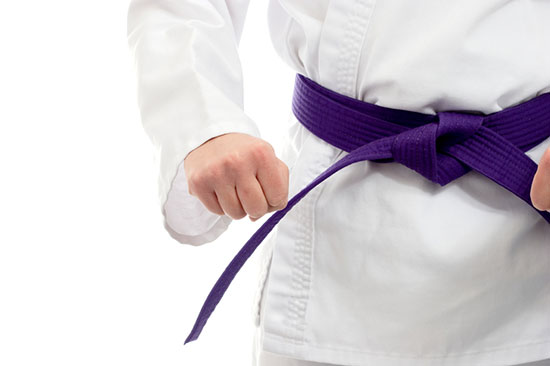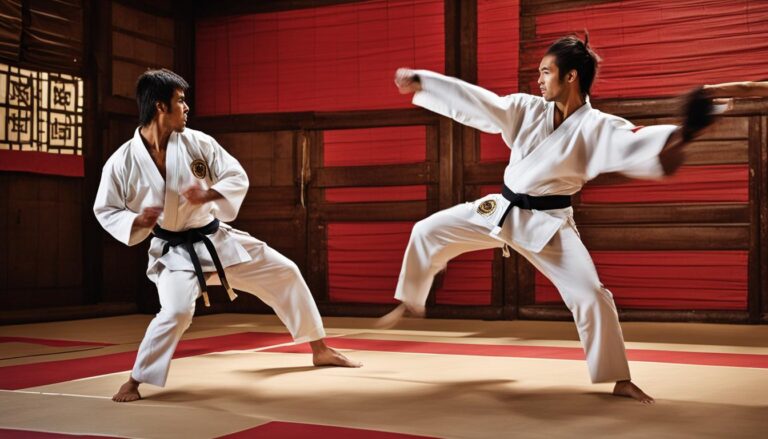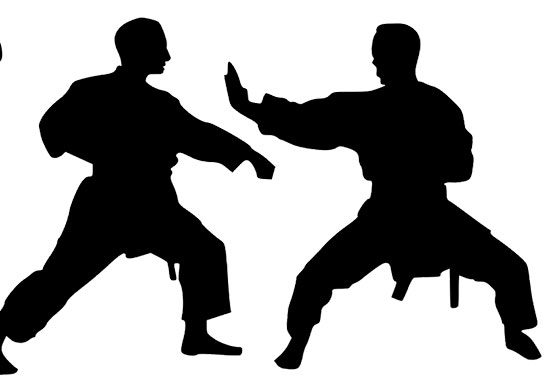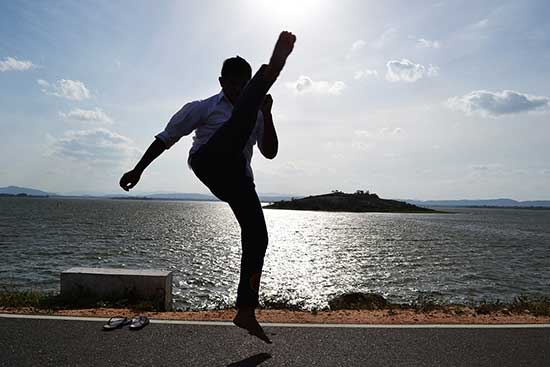Kickboxing and Kyokushin are among the popular forms of martial arts. Although the two are similar, there are several differences in philosophy, rules, technique, and equipment.
If you are into martial arts, it is important to know their origin, similarities, and differences, especially if you have to make a choice.
Be that as it may, kickboxing and Kyokushin are ideal for self-defense, working out, and competing.
Kyokushin karate was developed in the 1960s by the famous Masutatsu Oyama. Unlike other forms of karate, Kyokushin karate is brutal.
Oyama wanted to create a full-contact karate system where participants used bare knuckles, making it realistic, practical, and fun.
Besides opening a Kyokushin school (dojo) in Tokyo, Japan, Oyama founded Kyokushin Kaikan, an official organization to promote the new karate version.
Kyokushin was later recognized as a new karate style, and in 1969 an All-Japan Full Contact tournament was held. Kyokushin karate gained prominence and spread to other parts of the world.
Contents
Differences Between Kickboxing and Kyokushin
Techniques Used
In kickboxing, fighters use their knees and elbows to incapacitate the opponent. Kickboxing’s technique is aimed at using your body’s strength and momentum to maximize power and damage.
Therefore, the way you move or punch can determine the outcome. Most kickboxers focus on their footwork, hip rotation, and forward movement to win a fight or competition.
Although kickboxing is considered aggressive, its main objective is self-defense. Using their arms and legs, kickboxers deliver each strike with maximum force.
As a self-defense tactic, kickboxers learn counterattack moves and other evasive maneuvers to fend off attacks.
However, when it comes to Kyokushin karate, fighters should primarily focus on quickness, pressure, precision, and power to knock out an opponent.
In Kyokushin, karatekas do not wear any gear, including gloves and shin pads. Therefore, when sparring, Kyokushin karatekas learn how to punch and the force to use to avoid hurting their hands and legs.
Sparring is an important aspect of training in Kyokushin because it helps you learn how to stay calm, time, and judge your opponent’s distance.
Rules and Equipment Used
Since Kyokushin karatekas do not wear protective clothing like gloves, punches to the head are not allowed.
Kyokushin only allows karatekas to punch the body area below the neck to avoid serious injuries. However, punches to the head are allowed depending on the type of kickboxing.
Remember that kickboxers wear gloves, groin guards, shin guards, and mouthguards, making it safer to punch and kick the head, below the waist, and the upper body.
| Kickboxing | Kyokushin | |
|---|---|---|
| Origin | Originated in the United States and Europe, combining elements of boxing, karate, and muay Thai | Originated in Japan, developed from traditional karate |
| Techniques | Allows the use of punches, kicks, elbow strikes, and knee strikes | Focus on full-contact striking with punches, kicks, and knee strikes |
| Ground fighting | No ground fighting allowed | Ground fighting is allowed, but limited to throws and submission holds |
| Round format | Typically 3-5 rounds of 2-3 minutes each | Typically 3 rounds of 3 minutes each, with the possibility of extra rounds for a draw |
| Competition | Can include both point-based and full-contact fighting | Full-contact fighting, with knockdowns and knockouts, used to determine the winner |
Similarities between Kickboxing and Kyokushin?
Firstly, Kyokushin and kickboxing are ideal martial arts for self-defense. Depending on your training reasons, it is easier to defend yourself using non-lethal tactics.
However, it is crucial to understand that you are not supposed to start unnecessary fights. Try to remain calm at all times and defend yourself if necessary.
Secondly, kickboxing and Kyokushin training offer numerous health benefits. Training or sparring entails extreme cardio workouts, which could be helpful if you want to lose weight and stay fit.
Thirdly, fighters compete in both for fun, trophies, or awards. Keep in mind that competitions can vary depending on the location, participants, and level of experience or rank.
Choosing Between Kickboxing and Kyokushin
Whether you want to become a kickboxer or Kyokushin karateka, it is essential to consider some factors.
Do you want to learn self-defense or advance and compete in the sport? Do you want to learn the sport for recreational reasons?
What are you trying to achieve in the long run? Kickboxing is an ideal sport for self-defense and competitions.
If you do not want to sustain severe injuries during sparring or training, kickboxing is a better sport because you must wear safety gear.
If you want an adrenaline kick and do not fear injuries, Kyokushin is a good sport. Unlike kickboxing, Kyokushin is very effective and practical for self-defense because it teaches physical and mental preparedness in real-time.
Rigorous training helps Kyokushin karatekas develop automatic reactions to defend themselves.
Final Thoughts
Although kickboxing and Kyokushin have numerous differences and similarities, they are great martial art sports.
If you are contemplating training in either, take your time researching and consulting to make the right choice.
Your preference and long-term goals can help you decide easily. For example, if you want to become an MMA fighter, Kyokushin is not the best choice.
Since punches to the head are not allowed, Kyokushin fighters find it hard to transition to MMA fighting.
However, kickboxing rules are much more similar to MMA’s and fighters, especially footwork, kicking techniques, and the ability to sustain punishment.





